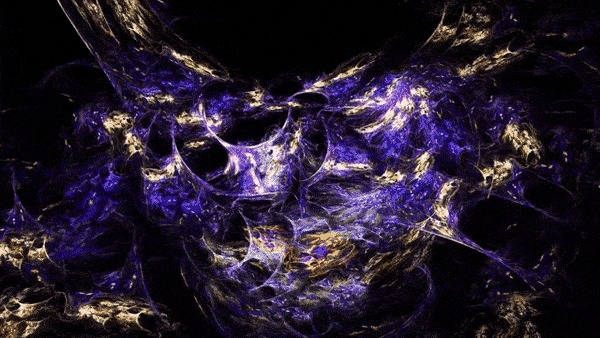
READ MORE: A Vibe Shift Is Coming Will any of us survive it? (The Cut)
It’s as if culture and global trend setters had been hibernating these past two years but our pandemic release has caused an ennui that no one can put their finger on.
There’s been a lot of chatter online describing this as a “vibe shift,” and vain attempts to pin down what this means.
The phrase comes from Sean Monahan, a trendcaster blogging at Substack. A trendcaster, or trend forecaster, is someone who has made a career of translating cultural trends for a larger audience. (Monahan also coined the term “normcore,” a fashion trend that embraces unpretentious, average-looking clothing as a way of subverting conventions about hipness, in the same way that “mumblecore” means cute, low budget, dialogue-heavy indie films like those made by Greta Gerwig and Noah Baumbach.)
Anyway, journalist Allison Davis picked and ran with Monahan’s idea and her piece for The Cut went viral.
She describes “vibe shift” as when, “In culture, sometimes things change, and a once-dominant social wavelength starts to feel dated,” and then worries whether she’s caught the new wave or is kind of condemned to miss out.
Like Monahan (who is 35), David is a self-described “geriatric millennial” who worries that she’s no longer young and hip enough.
“It’s chilling to realize you may be one of the stuck, or if you aren’t, you may be soon… I haven’t stopped thinking about my own survival odds since.”
Where Davis and Monahan are right is in identifying that the pandemic has hit pause on life, or at least put things into slo-mo.
“I suggest that the death drive has something to do with it. With the pandemic and climate change, our aesthetic and behavior are certainly shaped by a sense of doom. There’s a nihilism to the way people dress and party; our heels get higher the closer we inch to death.”
— Allison Davis
“That while some of us were inside, or in the world but social distancing, or just keeping to ourselves as best we could, culture wasn’t really moving forward,” Davis says. “I didn’t feel acute FOMO. It was nice that everyone was sort of stagnant, watching the same trash on Netflix. Sure, some people were going out ‘secretly,’ but we didn’t really know what those people were up to, and we didn’t have reason to believe they were advancing any sort of scene.”
In other words, the pressure to dress just right and talk about just the right things has been taken off these past two years since the world just stayed in.
“There’s been a real paranoia that people have,” Monahan tells Davis in an interview. “Everyone coming out of hibernation being like, What are people wearing? What are people reading? What are people doing? And it was different than when everyone had gone into the pandemic. It unsettled a lot of people.”
Now the lid has been lifted, the masks are off, the party can resume. To some people — and what seems like the rest of the internet, including sites like Bloomberg — that’s nightmare enough. Everyone seems preoccupied with catching the new vibe — whether that’s wearing “American Apparel, flash photography at parties, and messy hair and messy makeup,” according to Monahan — the return of early-aughts indie sleaze.
This is trite stuff at the best of times and to be completely fair to Monahan, Davis et al — they were writing all this in mid-February.
Remember mid-February, when the world seemed like just a normal kind of place where you could indulge in this kind of drivel?
Not any more. There is now something catastrophically deaf about these words from Davis pining about not knowing what music to listen to or whether avocados are “in.”
Read more: Russia’s Ukraine Invasion Is Testing the Limits of 21st Century News

“I suggest that the death drive has something to do with it. With the pandemic and climate change, our aesthetic and behavior are certainly shaped by a sense of doom. There’s a nihilism to the way people dress and party; our heels get higher the closer we inch to death,” Davis writes.
Mashable’s riff on the topic is equally insensitive, but only in light of the events that smashed the world overnight a couple of weeks later.
READ MORE: How to survive the ‘vibe shift’ — It’s coming. Are you prepared? (Mashable)
Yet, even though they didn’t mean it — because how could they — there is a vibe shift. At least one felt in Europe, perhaps less so thousands of kilometers away in North America — I’m not sure.
Russia’s war on Ukraine — on the whole of human rights and at the heart of democracy — changes everything.
As happened with COVID, the compulsive need to keep up with the Russian invasion is taking a toll on our mental health. The constant urge to check up on bad news is called “doom scrolling.”
Dr. Dean Burnett, a neuroscientist at Cardiff university, told The Guardian that the fact the crisis was still unfolding meant people were experiencing a kind of perpetual cliffhanger that made it harder to disengage.
READ MORE: Obsessed? Frightened? Wakeful? War in Ukraine sparks return of doomscrolling (The Guardian)
“It would be great if you could just say, I don’t want to engage with this Ukraine situation, because it caused my anxiety to spike. But because of the way the world works now, you’re cutting yourself off. It’s a lose-lose scenario,” he says.
In the same article, Juliet Landau-Pope, a productivity coach from London, says she’s been searching out personal testimonies on Twitter, trying to find different sources of information. “It’s the fact everything has happened so quickly. It’s not a question of what’s happening on a day-to-day basis, but hour by hour.”
She adds, “I’ve lost all inclination to socialize. It feels too trivial.”
Everything, including anyone losing sleep over which sneaker app to have open on a phone, is trivial in comparison.
The war cannot be contained; it is hard to compartmentalize, and it is so hard to ignore because the sides are so clearly drawn.
As Tomasz Jagiello, CEO at Polish cinema chain Helios Cinemas, told Celluloid Junkie last week, “Honestly I forget about COVID and the weekly results of my cinemas or windows. I feel like we are witnessing a change in history. I don’t remember any moment where’s there been such a clear line between bad and good. That’s why we all united to support the good and we all admire the great Ukrainian nation.”




